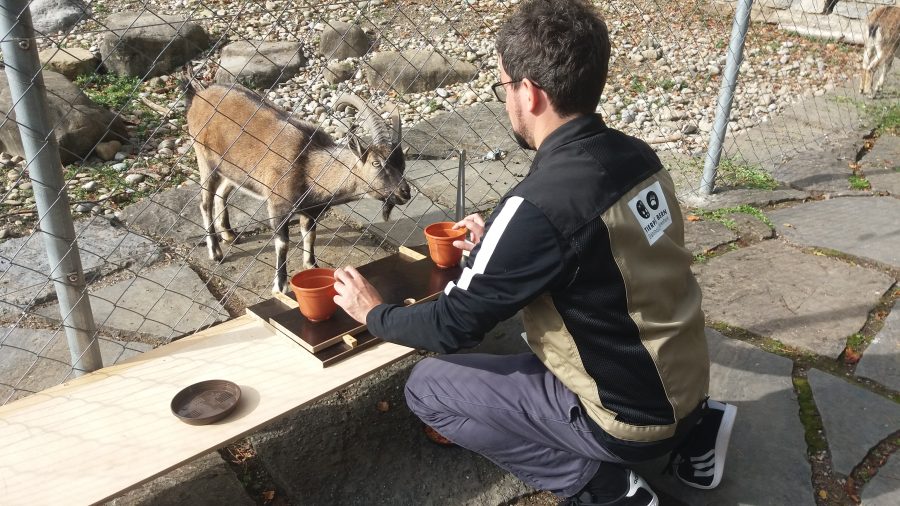Domestic goats have come a long way from their ancestors in the wild mountains of the Middle East to become the adorable, if rather naughty, farmyard companions and pets of today, but have their mental functions changed as a result? Tamsin Cooper reports…
Undoubtedly, the domestic goat’s appearance has varied and changed over time: some are small, others tall; ears can be lop, pricked, large or small; some coats are long, some fluffy, some short. But have their mental functions changed? That is what researchers from the Research Institute for Farm Animal Biology (Germany) and the Centre for Proper Housing of Ruminants and Pigs (Switzerland) wanted to know.
Such information is important to know so that we can adapt routines and procedures to fit our animals’ needs while providing a stress-free but stimulating environment. Animals that are flexible learners adapt better to change – and those who are not will need predictable routines.
Those who understand human gestures are easier to train and guide, while others may need alternative methods of gentle guidance. Some biologists theorise that the domestication process has dulled animals’ abilities to react to the environment and learn from it, as evolutionary pressure to survive is reduced in a domestic setting. Domestication has also reduced the fear of humans, as people have selected animals that are easier to manage over thousands of years. This suggests that domestic animals may be better at communicating with humans and following human-given cues (such as pointing) than wild ones.
Another theory considers the effect of selection for production by humans. As animals become more productive, they invest more energy into growth, gestation and lactation. So there remains less energy for sharpening mental skills. In this case, animals bred for high yield should be slower to learn from physical signs than those that are less selectively bred. Breeders of production animals also often select for docility to facilitate handling and enclosure, which may make production breeds more likely to understand human-given cues than others.
EFFECTS OF DOMESTICATION
However, when comparing the performance of wild goats, dwarf goats and dairy goats in several rewarded tests, scientists found that wild goats were just as able to respond to human-given cues as domestic ones. Seemingly, all those years of domestication had no effect on their ability to follow guidance from humans. This may be because they are already a social species. Once they have accepted a human as a friend, they look to the human just as they would to another herd mate. Nevertheless, there did appear to be some difference in how each group engaged with humans. Researcher Christian Nawroth anecdotally commented that dairy goats appeared to look more often at peoples’ faces than dwarf goats, but wild goats looked mainly at their hands, likely anticipating food delivery. But why did those wild goats decide to look to a human experimenter for food at all?
Picture caption: Researcher Christian Nawroth with a wild goat during a cognition trial at Bern Tierpark, Switzerland © Christian Nawroth
This article extract was taken from the May 2024 edition of The Country Smallholder. To read on, you can buy the issue here.
To receive regular copies of The Country Smallholder magazine featuring more articles like this, subscribe here.
For FREE updates from the world of smallholding, sign up for The Country Smallholder newsletter here.








